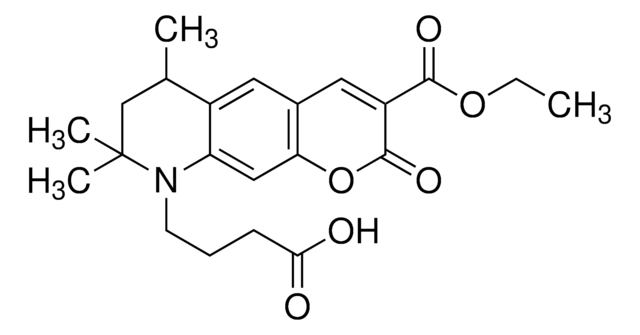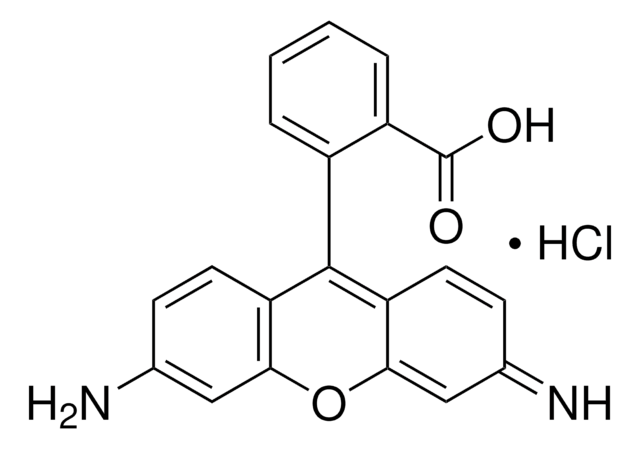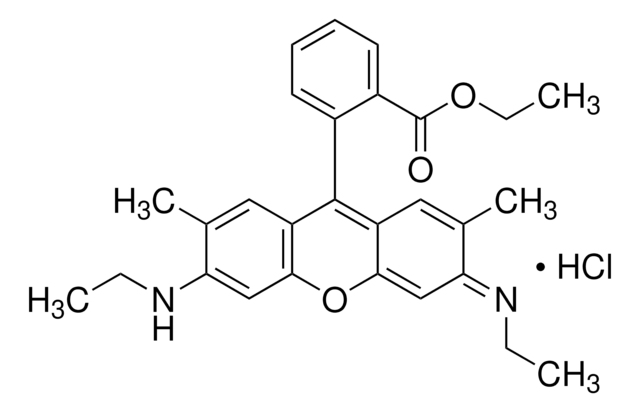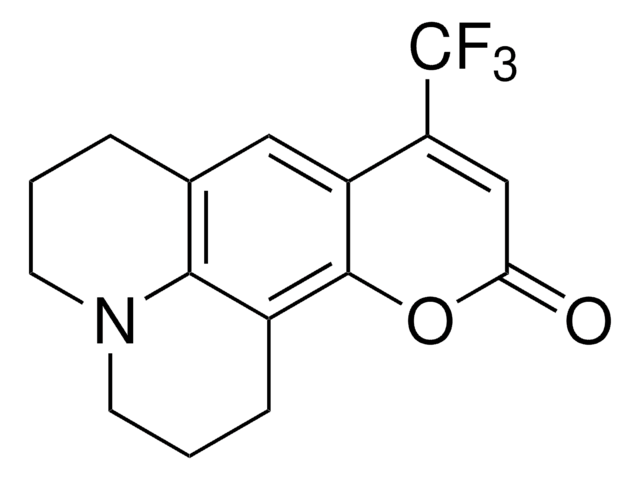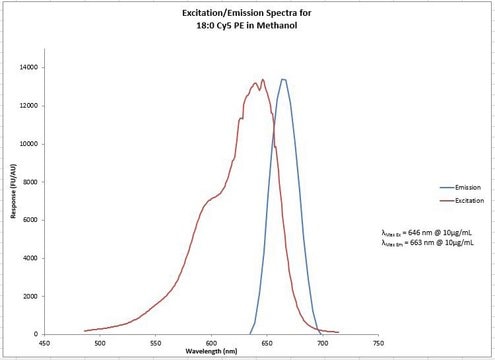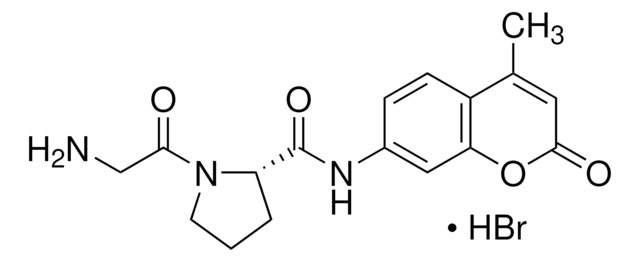30674
Atto 700
BioReagent, suitable for fluorescence, ≥90.0% (HPCE)
Iniciar sesiónpara Ver la Fijación de precios por contrato y de la organización
About This Item
Productos recomendados
product line
BioReagent
Quality Level
assay
≥90.0% (HPCE)
manufacturer/tradename
ATTO-TEC GmbH
transmittance
254 nm
700 nm
fluorescence
λex 681 nm; λem 714 nm in 0.1 M phosphate pH 7.0
λ
in ethanol (with 0.1% trifluoroacetic acid: 692 nm ± 3 nm)
suitability
suitable for fluorescence
storage temp.
−20°C
General description
Atto 700 hat eine molekulare Absorption von 120.000 und eine Quantenausbeute von 25% in Wasser.
Die Abklingzeit der Fluoreszenz beträgt 1.5 ns.
Die Abklingzeit der Fluoreszenz beträgt 1.5 ns.
Application
Atto 700 belongs to a new generation of fluorescent labels. The dye is designed for application in the area of life science, e.g. labeling of DNA, RNA or proteins. Characteristic features of the label are strong absorption, high fluorescence quantum yield, excellent thermal and photo-stability, very good water solubility and very little triplet formation. Atto 700 is a zwitterionic dye with a net electrical charge of zero. The fluorescence is efficiently quenched by electron donors like guanine, tryptophan, etc.
Atto labels have rigid structures that do not show any cis-trans-isomerization. Thus these labels display exceptional intensity with minimal spectral shift on conjugation.
Legal Information
This product is for Research use only. In case of intended commercialization, please contact the IP-holder (ATTO-TEC GmbH, Germany) for licensing.
¿No encuentra el producto adecuado?
Pruebe nuestro Herramienta de selección de productos.
Storage Class
11 - Combustible Solids
wgk_germany
WGK 3
flash_point_f
Not applicable
flash_point_c
Not applicable
ppe
Eyeshields, Gloves, type N95 (US)
Elija entre una de las versiones más recientes:
¿Ya tiene este producto?
Encuentre la documentación para los productos que ha comprado recientemente en la Biblioteca de documentos.
Multicolour single molecule imaging in cells with near infra-red dyes.
Tynan, C.J., et al.
PLoS ONE, 4, e36265-e36265 (2012)
Jan Vogelsang et al.
Photochemical & photobiological sciences : Official journal of the European Photochemistry Association and the European Society for Photobiology, 8(4), 486-496 (2009-04-02)
The role and interplay of triplet states and radical ion states in single-molecule fluorescence spectroscopy has recently been elaborated providing us with new insights into the photophysics and photobleaching pathways of fluorescent dyes. Adjustment of fluorophore redox properties in combination
Patricia Haus et al.
Journal of biomolecular screening, 16(10), 1206-1216 (2011-10-27)
Histone deacetylases (HDACs) are important epigenetic factors regulating a variety of vital cellular functions such as cell cycle progression, differentiation, cell migration, and apoptosis. Consequently, HDACs have emerged as promising targets for cancer therapy. The drugability of HDACs has been
Daniel Riester et al.
Bioorganic & medicinal chemistry letters, 19(13), 3651-3656 (2009-05-22)
Histone deacetylases reside among the most important and novel target classes in oncology. Selective lead structures are intensively developed to improve efficacy and reduce adverse effects. The common assays used so far to identify new lead structures suffer from many
Judith E Berlier et al.
The journal of histochemistry and cytochemistry : official journal of the Histochemistry Society, 51(12), 1699-1712 (2003-11-19)
Amine-reactive N-hydroxysuccinimidyl esters of Alexa Fluor fluorescent dyes with principal absorption maxima at about 555 nm, 633 nm, 647 nm, 660 nm, 680 nm, 700 nm, and 750 nm were conjugated to antibodies and other selected proteins. These conjugates were
Nuestro equipo de científicos tiene experiencia en todas las áreas de investigación: Ciencias de la vida, Ciencia de los materiales, Síntesis química, Cromatografía, Analítica y muchas otras.
Póngase en contacto con el Servicio técnico
